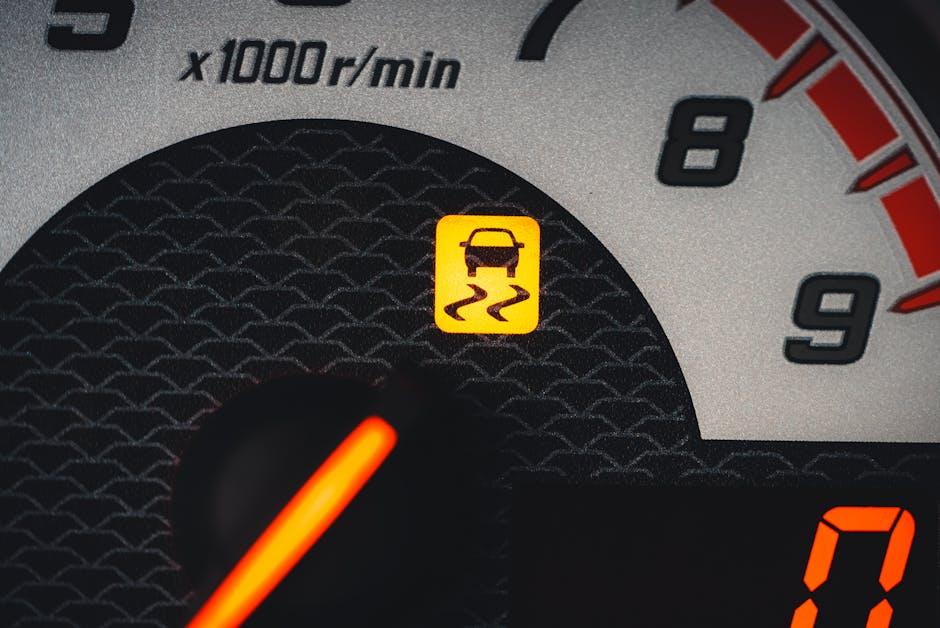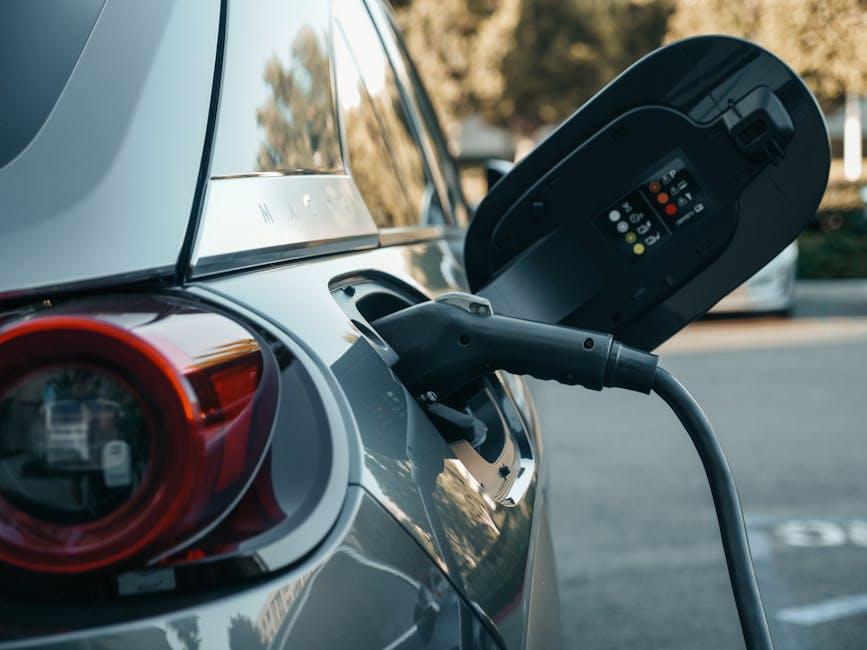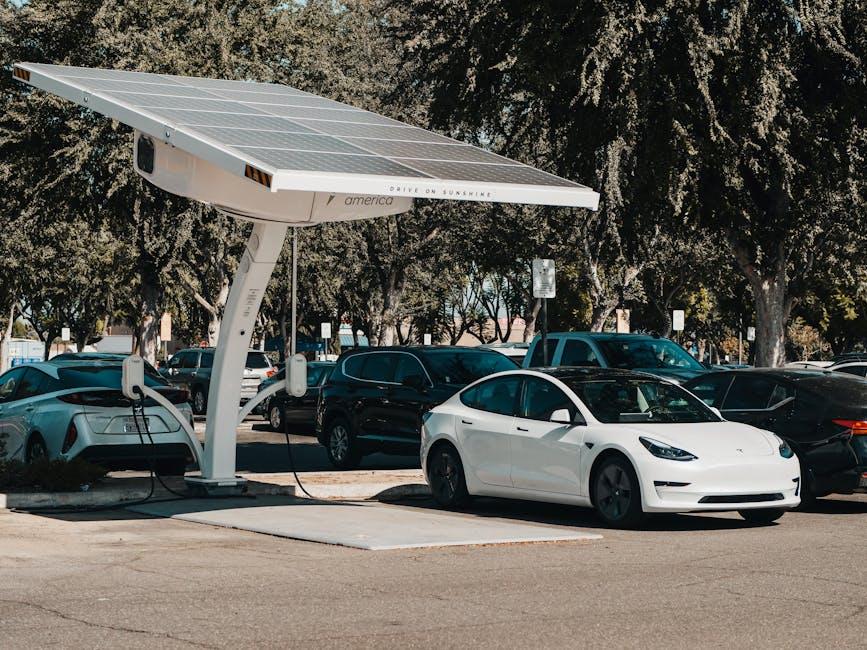Imagine setting off on your day’s adventure, only to be met with silence when you turn the key. Your car’s battery, often an unsung hero, is the vital spark that breathes life into every journey. But like all things, it has a lifespan—gradually losing its charge until one day, it simply won’t start. Recognizing the subtle signs that your car battery is fading can save you from unexpected breakdowns and roadside frustration. In this article, we’ll explore the telltale hints that indicate your battery is nearing the end of its life, helping you stay powered up and on the move.
Table of Contents
- Common Warning Indicators of a Failing Car Battery
- Understanding the Role of Battery Age and Usage Patterns
- How Extreme Weather Conditions Impact Battery Performance
- Diagnostic Tools and Tests to Confirm Battery Health
- Preventive Maintenance Tips to Extend Battery Lifespan
- When to Replace Your Battery and Choosing the Right Replacement
- Q&A
- In Conclusion

Common Warning Indicators of a Failing Car Battery
When your car battery starts to falter, it often sends out subtle signals that can be easily overlooked until it’s too late. You might notice the engine cranks slower than usual or takes a few extra tries to start. Dim headlights or flickering dashboard lights are other typical hints that your battery’s power is dwindling. Sometimes, an unusual smell resembling rotten eggs near the battery compartment indicates a leak or corrosion, warning you that immediate attention is necessary. These early signs are your vehicle’s way of telling you it’s time for a battery check before you encounter an inconvenient breakdown.
Additional symptoms include:
- Electrical components malfunctioning or behaving erratically
- Frequent need to jump-start the car
- A battery age of more than three years without replacement
- Tripped check engine or battery warning lights on the dashboard
| Symptom | What It Means |
|---|---|
| Slow engine crank | Battery struggling to provide enough power |
| Dim lights | Insufficient electrical output |
| Swollen battery case | Overheating or internal damage |
| Frequent jump-starts needed | Battery nearing end of life |

Understanding the Role of Battery Age and Usage Patterns
Car batteries, much like any other component, have a natural lifespan that gradually diminishes over time. While a typical battery lasts between 3 to 5 years, factors such as climate, driving habits, and maintenance routines can significantly influence this range. For example, extreme temperatures cause the battery’s chemical reactions to speed up or slow down, hastening wear and tear. Additionally, frequent short trips may prevent the battery from fully recharging, leading to a slow decline in its capacity.
Usage patterns also paint a clear picture of battery health. Consistent heavy electrical loads—such as using the stereo, heated seats, or in-car entertainment systems extensively—can put strain on the battery, reducing its efficiency. Below is a quick reference table outlining how different usage habits tend to impact battery longevity:
| Usage Pattern | Effect on Battery | Recommended Action |
|---|---|---|
| Short, frequent trips | Prevents full recharge | Occasional long drives |
| Heavy accessory use | Increased battery drain | Limit usage when parked |
| Extreme weather exposure | Accelerated aging | Garage storage recommended |

How Extreme Weather Conditions Impact Battery Performance
Battery efficiency is highly sensitive to the environment, and when faced with extreme temperatures, your car’s power source can suffer significantly. Cold climates slow down the chemical reactions inside the battery, reducing its ability to deliver sufficient current. This results in slower engine crank times or a complete failure to start. Conversely, excessively hot weather causes the battery fluid to evaporate, leading to internal damage and a shorter overall lifespan. This thermal stress can cause the battery casing to swell or leak, compromising reliability without outward signs until it’s too late.
Understanding how these conditions wear down your battery can help you identify early warning signs and take preventive measures. For instance, check for:
- Slow engine turnover during chilly mornings
- Visible corrosion around terminals after heatwaves
- Swollen battery case or fluid leaks in any weather
- Unusual electrical dimming when the car is idling
| Weather Condition | Effect on Battery | Signs to Watch For |
|---|---|---|
| Freezing Temperatures | Reduced chemical activity | Slow starts, sluggish electrical systems |
| High Heat | Accelerated fluid loss | Swelling, leaks, early failure |

Diagnostic Tools and Tests to Confirm Battery Health
To accurately assess the condition of your car battery, several diagnostic tools can be employed, each providing valuable insights into its health. A digital multimeter is a simple yet effective device that measures voltage and current, allowing you to check if your battery is holding a proper charge. Another popular tool, the hydrometer, evaluates the specific gravity of the electrolyte solution inside traditional lead-acid batteries, indicating the charge level of individual cells. For a more comprehensive analysis, professional automotive shops often use an engineered battery tester that performs load testing and internal resistance checks, revealing hidden weaknesses before a battery fails completely.
- Voltage Test: Measures the battery’s charge status with a multimeter (typically 12.6 volts or higher when fully charged).
- Load Test: Simulates typical engine starting conditions to check battery strength under stress.
- Hydrometer Reading: Assesses electrolyte density to spot undercharged or failing cells.
- Conductance Test: Uses electronic signals to evaluate battery capacity rapidly and accurately.
| Test Type | What It Measures | Ideal Results |
|---|---|---|
| Voltage Test | Battery charge level | 12.6V or above |
| Load Test | Battery output under stress | Minimum 9.6V during load |
| Hydrometer | Electrolyte specific gravity | 1.265 – 1.299 |
| Conductance Test | Battery capacity and condition | Pass/fail based on specs |

Preventive Maintenance Tips to Extend Battery Lifespan
Keeping your car battery healthy requires more than just occasional checks; it demands consistent care to avoid unexpected breakdowns. Consider these simple yet effective practices: avoid short trips which prevent the battery from fully charging, and always turn off lights and electronics when the engine is off to prevent unnecessary power drain. Additionally, inspecting terminals for corrosion and cleaning them regularly can significantly improve your battery’s performance and overall longevity.
Optimal battery maintenance also involves paying attention to temperature extremes—both hot and cold weather can wear down battery capacity faster. When available, park in shaded or covered areas to shield your battery from excessive heat or freezing conditions. You can also schedule routine professional inspections as part of your regular vehicle service. Below is a quick reference chart for maintenance frequency:
| Maintenance Task | Recommended Frequency |
|---|---|
| Terminal Cleaning | Every 3 months |
| Battery Fluid Check | Every 6 months |
| Professional Battery Test | Annually |

When to Replace Your Battery and Choosing the Right Replacement
Recognizing the right time for a battery replacement can save you from inconvenient breakdowns and costly repairs. If you notice frequent slow engine starts, dimming headlights, or an illuminated check engine light, these are clear indicators that your battery is struggling. Additionally, age plays a crucial role; most batteries last between 3 to 5 years, so even if no symptoms are apparent, a proactive replacement after this period can prevent unexpected failures.
Choosing the ideal replacement battery involves more than just picking one off the shelf. Consider factors such as battery size, cold cranking amps (CCA), and reserve capacity. Your vehicle’s owner manual will specify the recommended type, but here’s a quick reference guide to help you match the best battery to your needs:
| Vehicle Type | Battery Size | CCA Range | Reserve Capacity (minutes) |
|---|---|---|---|
| Compact Cars | Group 24 | 450-600 | 90-120 |
| SUVs & Light Trucks | Group 34/78 | 600-850 | 120-150 |
| Luxury Vehicles | Group 48 | 700-900 | 140-160 |
- Opt for a battery with higher CCA if you live in colder climates to ensure reliable starts.
- Check the warranty period, as longer warranties often indicate better quality and durability.
- Consider maintenance-free batteries for a hassle-free experience.
Q&A
Q: What are some common signs that my car battery is dying?
A: One of the earliest hints is a sluggish engine crank—if your car takes longer to start or the starter sounds weak, your battery might be losing its charge. Dim headlights, flickering dashboard lights, or electronic accessories that behave erratically are other subtle clues. You might also notice the battery warning light glowing on your dashboard.
Q: Can cold weather affect my car battery’s performance?
A: Absolutely. Cold temperatures can sap a battery’s power and reduce its ability to hold a charge. If your battery is already aging or weak, chilly mornings might leave you stranded with a no-start situation more often.
Q: Is it normal for my car to stall or have trouble starting sometimes?
A: Occasional trouble isn’t unusual, but frequent stalling or difficulty starting could indicate a dying battery—or possibly another issue with the electrical system. If these problems persist, getting your battery tested is a smart move.
Q: How do corroded battery terminals relate to a dying battery?
A: Corrosion buildup on battery terminals can interrupt the flow of electricity, making starting your car harder. While cleaning terminals can temporarily improve connections, corrosion is often a symptom of an aging or failing battery that might need replacement.
Q: Can I wait until my battery completely dies before replacing it?
A: It’s risky to wait. A failing battery can leave you stranded unexpectedly, especially in poor weather. Regular testing and timely replacement help avoid inconvenient breakdowns. Plus, many auto shops offer free battery tests to help you stay ahead.
Q: Are there maintenance tips to extend my battery’s life?
A: Sure! Keep terminals clean and tight, avoid short trips that don’t fully recharge the battery, and limit power-heavy accessories when the engine is off. Regular check-ups during routine service visits can catch early signs of battery wear.
Q: When should I consider professional help for my battery issues?
A: If you notice multiple warning signs—dim lights, slow starts, dashboard alerts—or if your battery is more than three to five years old, a professional battery test can determine if replacement is necessary. It’s better to be safe than stuck!
In Conclusion
In the quiet hum of your daily drive, your car battery often plays the unsung hero, powering every start and every journey. Yet, like all heroes, it shows signs when its strength wanes. Recognizing these subtle signals early can save you from unexpected stalls and roadside headaches. So next time your engine hesitates or your lights dim, listen closely—your battery might be whispering its final goodbye. Staying attuned means not just avoiding the inconvenience, but keeping your adventures on the road, smoothly and safely.


1 Comment
q1rnpa